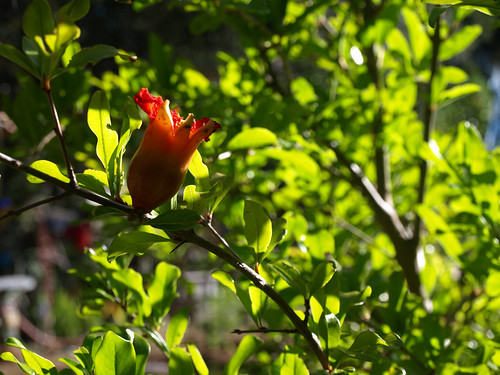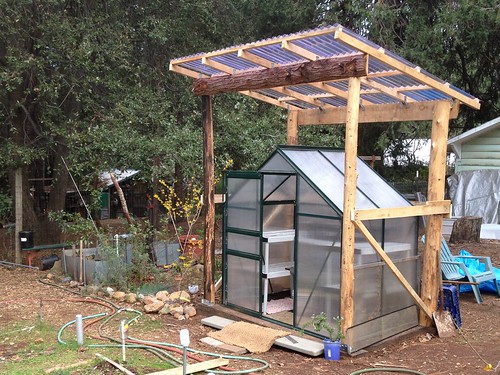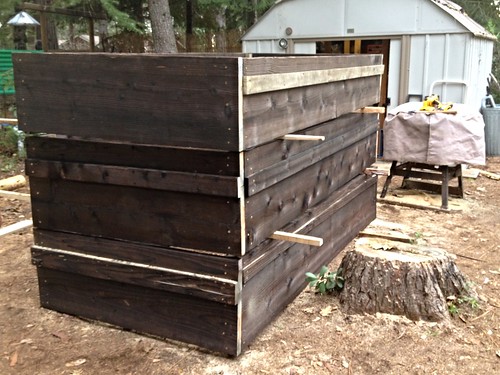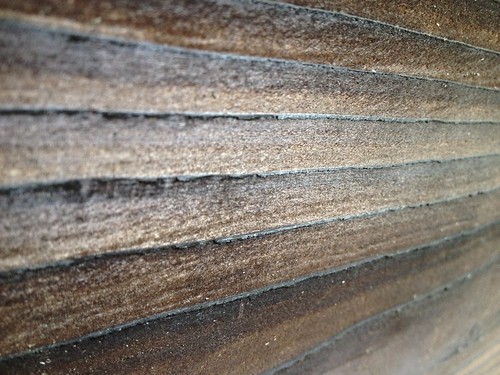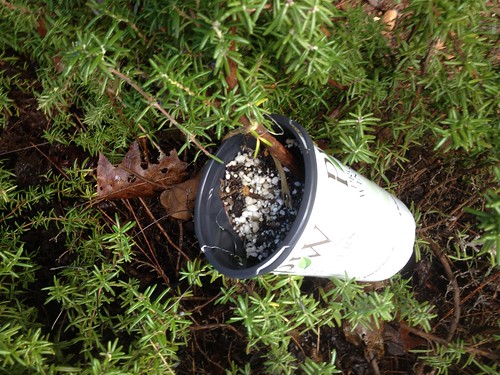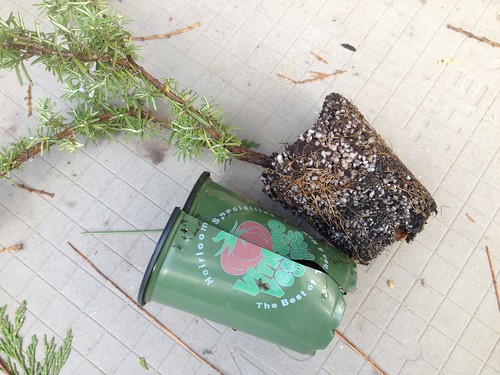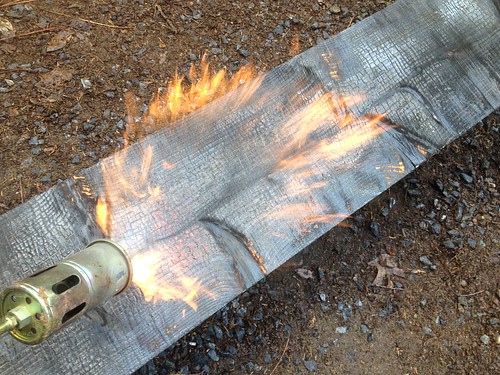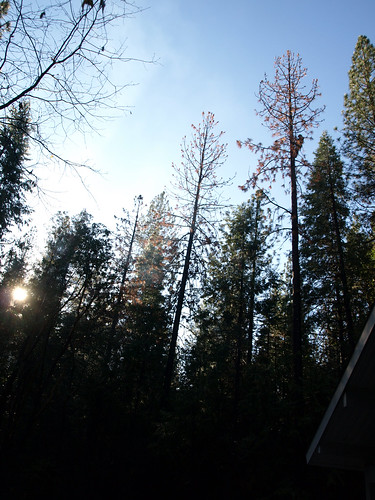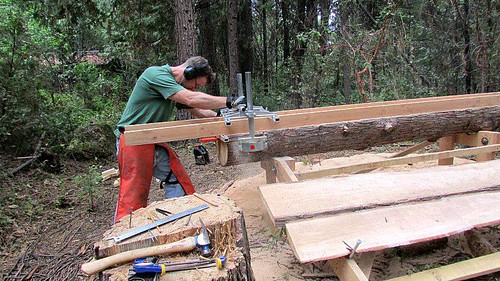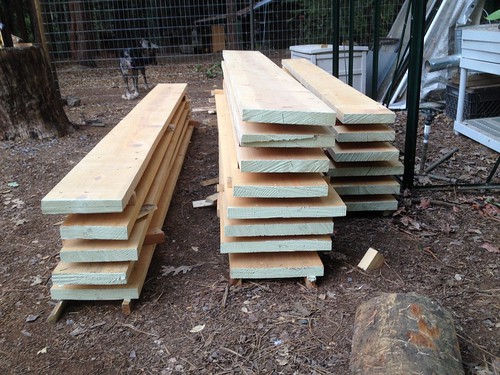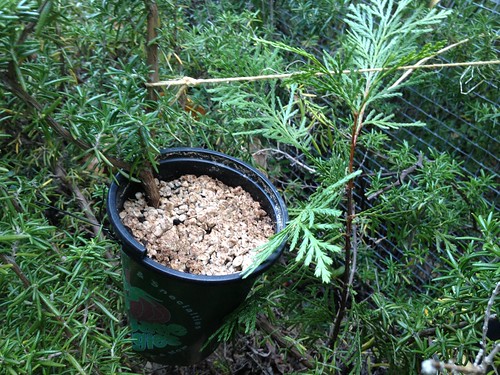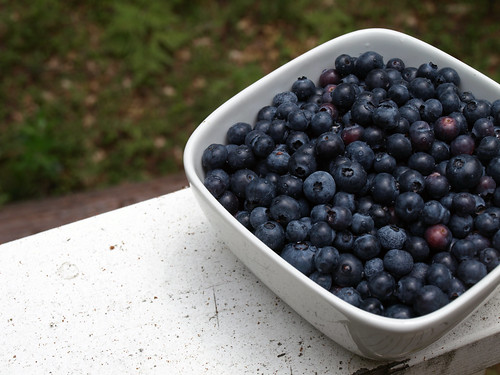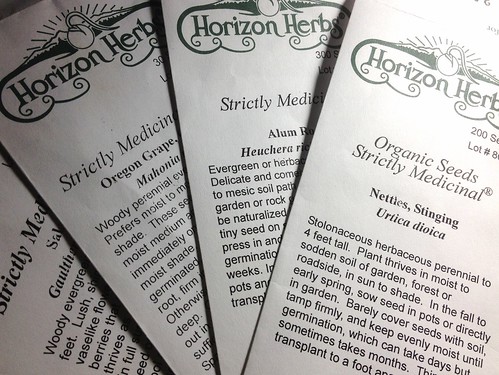To conserve rooting medium, water, time and space, I typically root cuttings in gang pots, which depending on what I’m rooting might hold a few to as many as a dozen cuttings. For instance, when I prune the blueberries in the winter, I’ll reduce the branches to 6 or 8 inch cuttings, and stick them all in a shallow pot. When they’ve rooted in the spring, I break up these gang pots and re-pot each rooted cutting into its own 1 gallon container, and then grow them up until they’re ready to be planted in the ground.
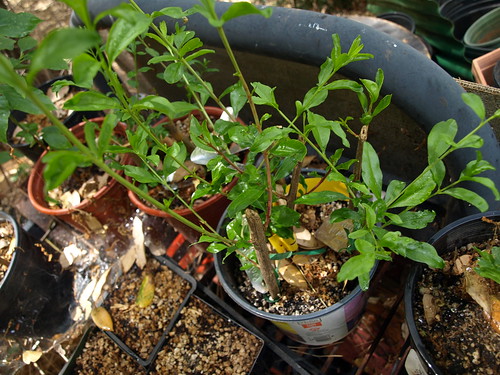
With the recent warm weather, one such gang pot of pomegranates (Punica granatum var. Al-sirin-nar) really found its roots and had a growth spurt, so I potted up each of six rooted cuttings in its own pot. When they’re ready, some of these six will join their brethren out in various forest plots, and some will remain to fill out some recently annexed areas in the garden proper, all as part of my efforts to reduce water usage – pomegranates don’t seem to be thirsty at all once established. Like many established fruit trees here, the oldest pomegranate has decided that this drought year is THE year to fruit, so hopefully there will be a few nice poms to eat in a few months.
